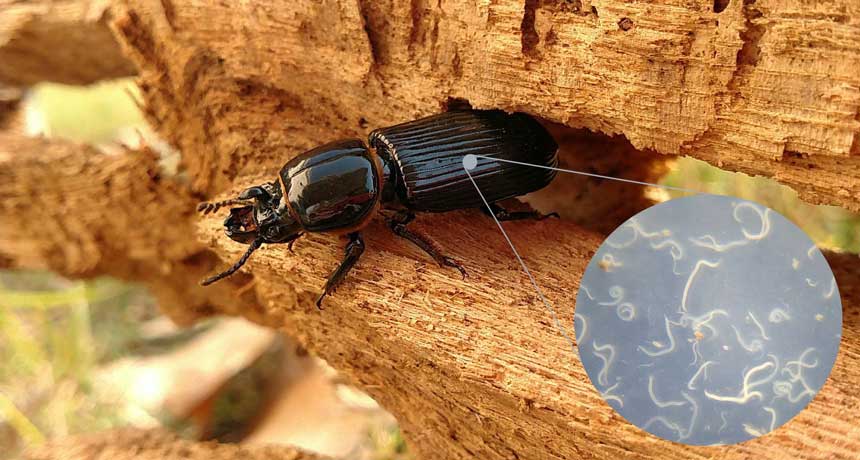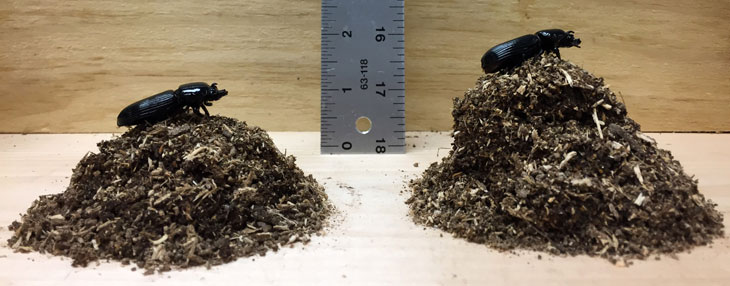
EATING FOR MANY MORE THAN ONE Horned passalus beetles, found in the eastern United States, chew up more rotting wood if they harbor wormlike nematodes (inset) inside their abdomens.
A.K. Davis
- More than 2 years ago
Having hundreds of roundworms living inside your abdomen may seem like a bad thing. But for horned passalus beetles, hosting wriggly nematode larvae may benefit them and the eastern U.S. forests they live in.
Beetles that harbor Chondronema passali larvae eat more rotting wood than beetles without the larvae, researchers report May 1 in Biology Letters. That increased decomposition could speed the cycling of forest nutrients, the authors suggest.
Earlier research found that about 70 to 90 percent of Odontotaenius disjunctus, commonly called bess beetles or patent leather beetles, are inhabited by hundreds if not thousands of nematodes, but appear to suffer few ill effects. The larvae feed off the beetles’ haemolymph, the insect version of blood, and in doing so suck up some of the beetles’ available energy, an effect that’s noticeable only when the beetles are under short-term stress.
That increased need for energy could be what drives infected beetles to chomp more wood, says Andy Davis, an ecologist at the University of Georgia in Athens. It’s also possible that beetles with larger appetites have more opportunities to become infected since they eat more wood, he says.
Davis and undergraduate student Cody Prouty captured 113 beetles from the woods near campus and isolated each one in a container with a chunk of wood. “On a quiet day, you could go in the lab and hear them chewing,” Prouty says.

After three months, the team weighed how much wood each insect had eaten, digested, excreted and eaten again after letting bacteria and fungi break the pulp down more. The researchers then dissected the beetles to identify which had nematodes. Beetles with nematodes had processed an average of 0.77 grams of wood per day. That was about 15 percent more than uninfected beetles, which averaged 0.67 grams per day. Beetles with nematodes were also were slightly larger, on average, something that could contribute to their larger appetites.
Davis says he’d like to measure the eating habits of the beetles before and after acquiring nematode larvae, and find out the impact of having different amounts of larvae in the gut. But first scientists need to figure out how and when the nematodes get into the beetles in the first place.
This study is part of “a new wave of research coming out now that promotes the idea that parasites are important in the ecosystem,” Davis says. “There are so many ways they’re interconnected, and we’re just getting around to studying them.”
Data showing the connections between the beetles and the nematodes are good, evolutionary ecologist Sheena Cotter says in an e-mail. “This is actually a really interesting system.” But she says the relationship appears more mutualistic, in which both get some kind of benefit, rather than a harmful parasitic one.
Adult nematodes living in rotting logs could be helping the beetles by pre-digesting the wood, says Cotter, of the University of Lincoln in England. And nematode larvae could be just hitching a ride to the next log. Although teeming with the larvae, “the beetles aren’t sick,” she says, “and in fact are probably harboring lots of nematodes for their own benefit.”






